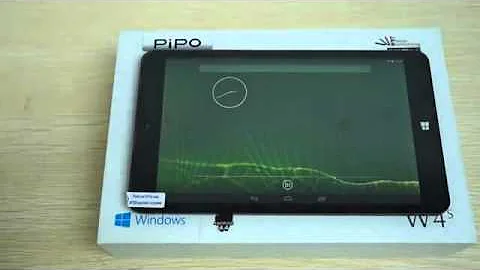Mastering Logic Gates: A Comprehensive Guide to IC Chips and Datasheets
Table of Contents
- Introduction to Logic Gates
- Understanding Truth Tables
- Deriving Outputs of Logic Gates
- Universal Gates and Equivalent Circuits
- Implementing Logic Gates on IC Chips
- Types of IC Chips
- Identifying Pin Numbers on IC Chips
- Interpreting Data Sheets
- Considerations for Input and Output Voltages
- Summary and Conclusion
Introduction to Logic Gates
🔍
Logic gates are fundamental building blocks of digital circuits. They are electronic devices that perform logical operations on one or more binary inputs to produce a single binary output. These gates can be combined to create more complex circuits that can process and manipulate digital information. In this article, we will explore the concept of logic gates in depth and understand their role in digital electronics.
Understanding Truth Tables
📊
A truth table is a tabular representation of the possible input-output combinations of a logic gate or a logical expression. It shows all the possible input values and their corresponding output values based on the logic gate's behavior. By analyzing truth tables, we can determine the logical function performed by a specific gate and understand how it behaves under different input conditions.
Deriving Outputs of Logic Gates
🔌
To understand how logic gates derive their output values, we need to examine the logical operations they perform. Each logic gate operates on the principle of Boolean algebra, which defines logical operations like AND, OR, and NOT. By applying these operations to the input signals, logic gates generate the desired output based on the predefined behavior of the gate.
Universal Gates and Equivalent Circuits
🔗
Universal gates are logic gates that can be used to perform any logical operation. By combining multiple instances of a universal gate, we can create circuits equivalent to any other type of gate. This concept allows us to simplify circuit design and reduce the number of different gate types required in a circuit. We will explore the different types of universal gates and how they can be used to derive equivalent circuits.
Implementing Logic Gates on IC Chips
💡
Logic gates are commonly implemented using integrated circuit (IC) chips. These chips contain multiple gates on a single semiconductor substrate, allowing for compact and efficient circuit design. We will discuss the different types of IC chips used for logic gates, including dual inline dil (DIL) IC chips and PCB-mounted IC chips. Each type has its own advantages and applications.
Types of IC Chips
🖧
IC chips come in various types and configurations, each suitable for specific applications. Some common types include BCD to seven-segment decoders, 555 timers, and voltage comparators. These chips can contain multiple gates or other components, making them versatile building blocks for digital circuits. We will explore different types of IC chips and their purposes in digital electronics.
Identifying Pin Numbers on IC Chips
🔢
When working with IC chips, it is important to correctly identify the pin numbers for proper connectivity. IC chips generally have a notch or a dot to indicate the orientation. The pin to the left of the notch or dot is usually designated as pin 1, and the numbering convention follows from there. We will discuss how to identify and interpret pin numbers on IC chips, ensuring proper integration into circuit designs.
Interpreting Data Sheets
📄
Data sheets provide essential information about IC chips, including pin configurations, truth tables, and operating parameters. Analyzing data sheets is crucial to understand the behavior and specifications of a particular IC chip. We will learn how to interpret data sheets and utilize the information provided to select and integrate the appropriate IC chips into circuit designs.
Considerations for Input and Output Voltages
⚡
Input and output voltages play a crucial role in the operation of logic gates. While ideal logic levels are commonly considered as 0V for low and 5V for high, real-world factors can introduce variations. It is important to understand the acceptable voltage ranges for the IC chips and ensure reliable operation within those limits. We will discuss the significance of input and output voltage requirements and how to achieve consistent levels in practical circuits.
Summary and Conclusion
✅
In conclusion, logic gates are fundamental components of digital electronics, enabling the manipulation of binary data. By understanding their behavior, truth tables, and implementation on IC chips, we can design and build complex digital circuits. Proper interpretation of data sheets and adherence to input and output voltage requirements are essential for reliable circuit operation. With this knowledge, you can confidently incorporate logic gates in your electronic projects.
Pros:
- Logic gates provide a foundation for digital circuit design.
- Universal gates offer versatility and simplify circuit complexity.
- IC chips allow for compact and efficient circuit integration.
- Data sheets provide crucial information for proper IC chip integration.
- Understanding input and output voltage considerations ensures reliable circuit operation.
Cons:
- Complex circuits can be challenging to design and troubleshoot.
- The variation in input and output voltage can affect circuit performance.
- Incorrect pin identification on IC chips can lead to connectivity issues.
Highlights
- Logic gates are fundamental building blocks of digital circuits.
- Truth tables depict the relationship between input and output values of logic gates.
- Universal gates can perform any logical operation and simplify circuit design.
- IC chips contain multiple gates and facilitate compact circuit integration.
- Pin numbers on IC chips can be identified using notches or dots.
- Data sheets provide essential information about IC chips.
- Input and output voltage ranges are vital for proper circuit operation.
FAQs
Q: What are logic gates?
A: Logic gates are electronic devices that perform logical operations on binary inputs to produce a binary output.
Q: How are logic gates implemented on IC chips?
A: Logic gates are commonly integrated into IC chips, which contain multiple gates on a single semiconductor substrate.
Q: How do I identify the pin numbers on IC chips?
A: Look for a notch or dot on the IC chip, and the pin to the left of it is usually designated as pin 1.
Q: What information can I find in data sheets?
A: Data sheets provide pin configurations, truth tables, and operating parameters for IC chips.
Q: Why is input and output voltage important for logic gates?
A: Input and output voltage levels determine the reliable operation of logic gates and should fall within specified ranges.
Q: What are the advantages of universal gates?
A: Universal gates can perform any logical operation, simplifying circuit design and reducing the number of gate types required.
Q: What are the challenges of complex circuit design?
A: Complex circuits can be challenging to design and troubleshoot due to their intricacies.
Q: How can variations in input and output voltage affect circuit performance?
A: Variations in voltage can lead to uncertainties in output values and impact overall circuit functionality.
Q: What happens if I incorrectly identify the pin numbers on IC chips?
A: Incorrect pin identification can result in connectivity issues and improper circuit operation.
Q: Why is it important to adhere to input and output voltage requirements?
A: Adhering to voltage requirements ensures consistent and reliable operation of the logic gates in a circuit.
Resources: Simulink Tower, datasheets of IC chips.
 WHY YOU SHOULD CHOOSE TOOLIFY
WHY YOU SHOULD CHOOSE TOOLIFY

























